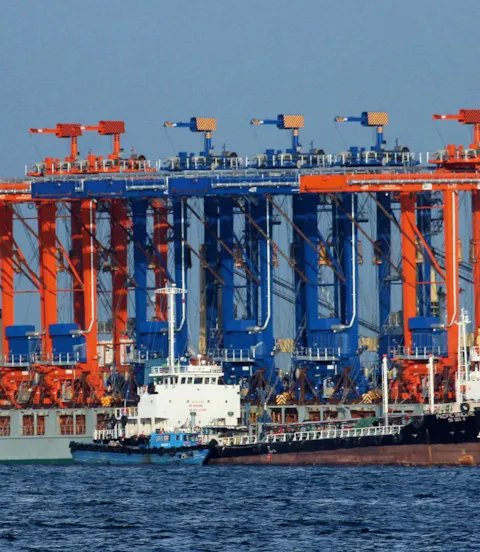Widen the weather window
The time window for challenging project cargo jobs can be unreasonably narrow when using the standard method to compute design loads. DNV GL offers fast and precise motion analysis services.
Ship motion in seaway is important input information when calculating design loads for ship structures and cargo, including seafastening elements. Traditionally the industry has been satisfied using the empirical loads specified by regulations which cover all possible scenarios encountered during ship operation. However, these design loads may be too conservative for a given transport project, region and season. The industry increasingly performs direct computations, which in some cases expand the usable weather window and can unlock added efficiency potential. Ship motion analyses are complicated because they involve nonlinear physics as well as consideration of viscous effects and the complex interaction between ship and waves. CFD (computational fluid dynamics) analyses need to be carried out for many combinations of ship speeds, heading angles and wave conditions, typically within a very short period of time. Thus, highly sophisticated numerical simulations as used in R&D or model tests cannot be used, as they take too much time or are too costly. It is industry practice to use simpler computational methods — at the cost of introducing unknowns, uncertainties or possible errors. To compensate for these factors it is customary to apply conservative empirical estimates, which unfortunately reduce the potential gains of direct analysis.

Enabling a wider range of projects
DNV GL has developed the technology and capabilities for rapid, yet more accurate predictions of motion, acceleration and loads without compromising safety standards or vessel performance. DNV GL’s scientific approach will not only help expand the operational window for a project but may in some cases even be the enabler of a project that would not be possible otherwise. Applying this also demonstrates to external parties, such as cargo owners and marine warranty surveyors, that a nonstandard transport job is planned and conducted in a responsible manner.
The DNV GL approach is based on the application of cuttingedge CFD software combined with parallel simulations, based on our own ongoing research and development work as well as practical application within the scope of maritime advisory work.
The typical workflow for developing operational limits for a specific transport project comprises several steps. Usually the customer submits the relevant project information and available models DNV GL is setting up an analysis model from. Preliminary results are presented to the customer to allow for adaptations within the process before the final results are provided.
A project may take one to four weeks, depending on the available time, the scope of work and the required accuracy. The project team consists of two to four engineers and a project manager, depending on the scope of work. Regular status meetings with the customer have shown to be an efficient way to ensure that the time and budget limits and the customer’s expectations are all met.
DNV GL is always ready to assist customers with timely ship motion analyses and design load calculations for specific project cargo jobs.

Vladimir Shigunov
Senior Project Engineer